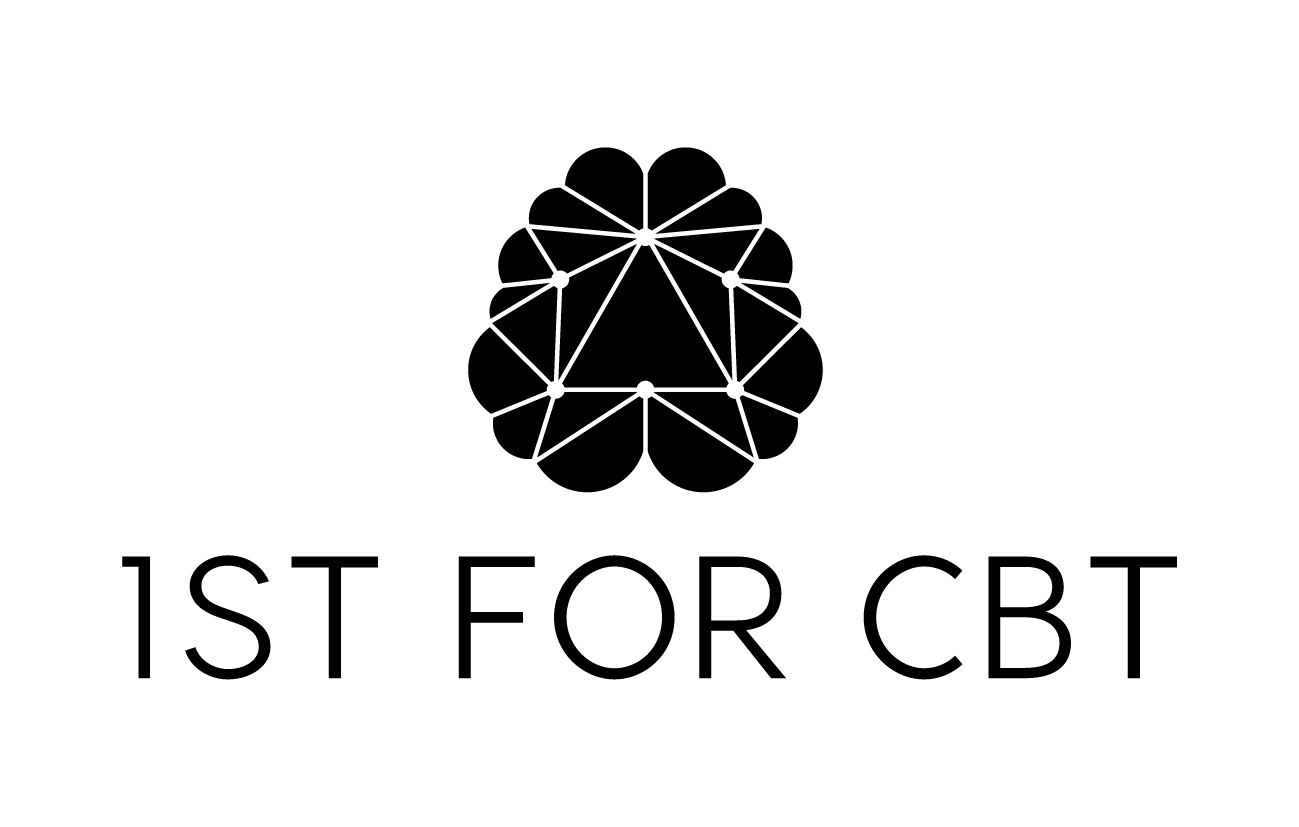WHAT IS CBT?
CBT IS A STRUCTURED, TIME LIMITED AND GOAL ORIENTATED TALKING THERAPY, ALLOWING INDIVIDUALS TO SEE THAT EMOTIONS AND BEHAVIOURS ARE GREATLY INFLUENCED BY OUR THOUGHTS.
1st for CBT is a therapy service that uses Cognitive Behavioural Therapy (CBT) to tackle symptoms from a range of Mental Health conditions.
CBT is an evidenced and skill-based therapy which looks at understanding the links between our thoughts (cognitions), feelings (emotions) and actions (behaviours). By using this psychological treatment individuals work collaboratively with their therapist to examine their thought processes and their responses to a given situation.
Negative thoughts are often triggered by a negative situation often causing errors in one’s thinking. These negative thoughts and behaviours often sabotage our self-confidence and make us feel depressed or anxious, lowering our self-esteem.
Often our responses to events are automatic and based upon our past experience rather than assessing the current situation.
For example, a person suffering from depression is more likely to take a rejection from a job application personally, particularly focusing on their imperfections (often exaggerated in their minds). Such interpretations are likely to further lower their mood and lead to them being less likely to make further applications, therefore having beliefs such as; “I will never find a job”.
BUT WHAT DOES A CBT THERAPIST DO & WHAT CAN YOU EXPECT FROM A SESSION?
CBT IS OFTEN DESCRIBED AS HAVING A ‘HERE AND NOW’ FOCUS RATHER THAN OTHER THERAPIES WHICH MIGHT PLACE MORE EMPHASIS ON EARLY EXPERIENCES. CBT SEEKS TO UNDERSTAND WHAT MIGHT BE CAUSING AND MAINTAINING A PROBLEM.
A CBT therapist supports individuals to develop strategies to manage their thoughts, feelings and behaviours. During a CBT session, the therapist might focus on:
Identifying Negative Automatic Thoughts (NAT).
Examining our belief systems.
Identifying unhelpful behaviours e.g. Avoidance, which although may be helpful in the short term, does not usually solve a problem and can have an impact in the long run on our mental wellbeing.
Alternative ways of thinking and the way we react to certain events, which might be more helpful for managing a given situation.
The underlying principle of CBT is that by addressing unhelpful thinking patterns and behaviours, people can change how they feel, how they view themselves, and how they interact with others.
You can also read more about CBT on the BABCP website. Just visit www.babcp.com for in depth information on all the aspects of CBT.
HOW DOES 1ST FOR CBT USE THESE PROCESSES?
THE UNDERLYING PRINCIPLES OF CBT IS THAT BY ADDRESSING UNHELPFUL THINKING PATTERNS AND BEHAVIOURS, PEOPLE CAN CHANGE HOW THEY FEEL, HOW THEY VIEW THEMSELVES, AND HOW THEY INTERACT WITH OTHERS.
COURSE TREATMENT
Identify initial target problem (this will be completed through an assessment session)
Introduce cognitive model and how to apply by building a formulation. A formulation is a collaborative piece of work where we pull together the information showing what are the triggers low mood, anxiety and how the depression/anxiety is impacting on your daily living (thoughts and feelings) and by discovering a maintenance cycle.
Begin work on reducing symptoms thorough behavioural activation, this is one of the main forms of strategies for depression or graded exposure for working on anxiety issues.
The main focus of the sessions will be identifying and challenging NAT’s (Negative Automatic Thoughts), through thought records, mood records, completing activities dairies, seeking evidence to disprove some of the NAT’s and behavioural experiments.
Towards the end of therapy we will identify and modify dysfunctional assumptions or core beliefs, with a view to reduce risk of relapse.
For further information on how CBT could assist you or someone you know with ASC, Anxiety, Depression, low self-esteem, PTSD, OCD or any other condition that is preventing their health and wellbeing please contact me for further details. Therapy can be offered on an individual basis or as part of a group depending on the needs of the client.


